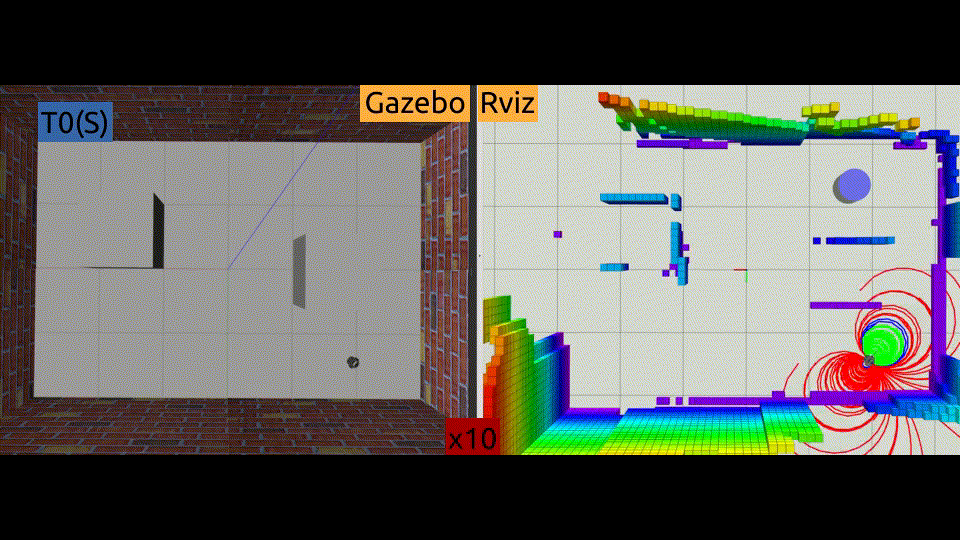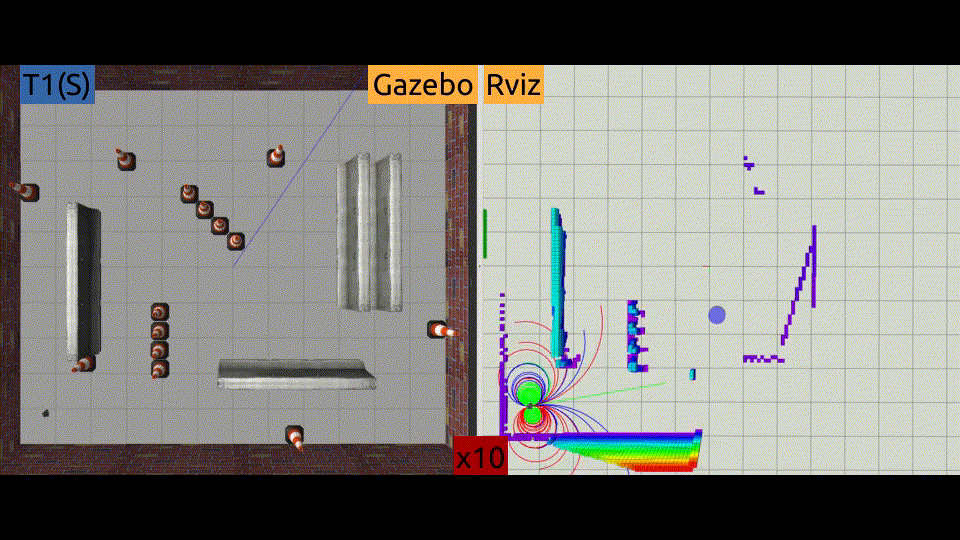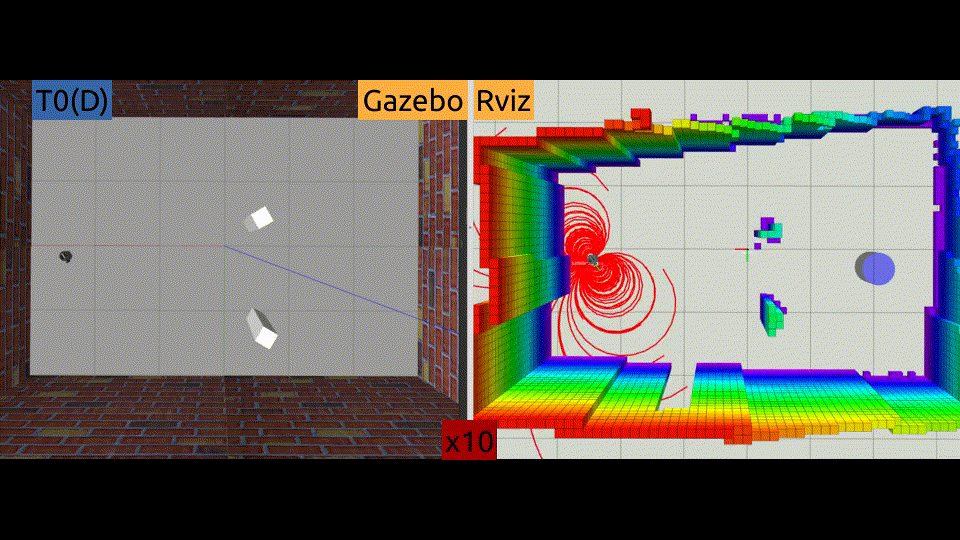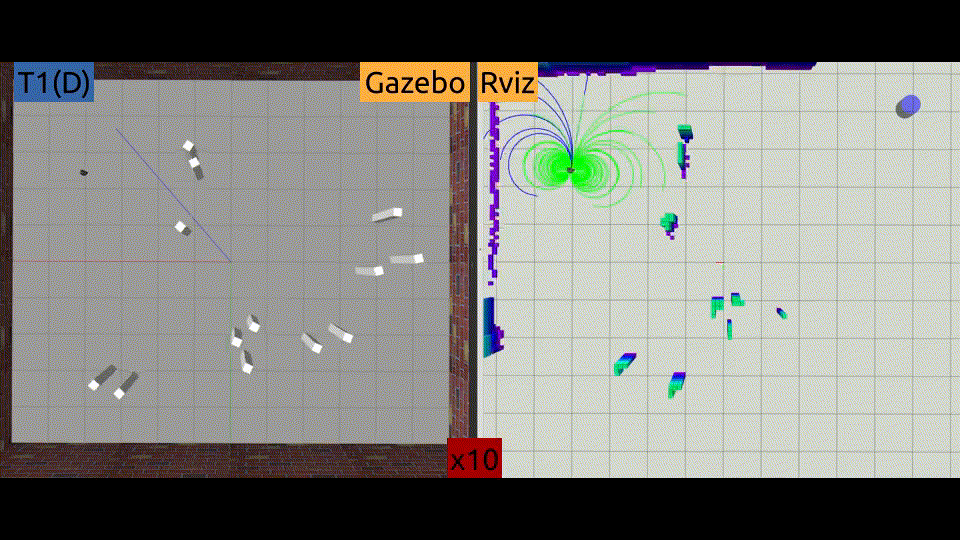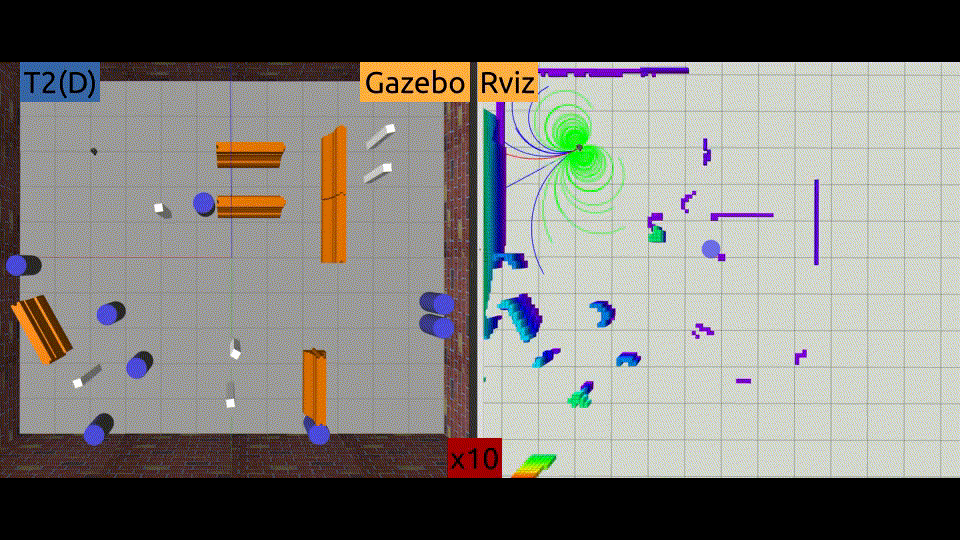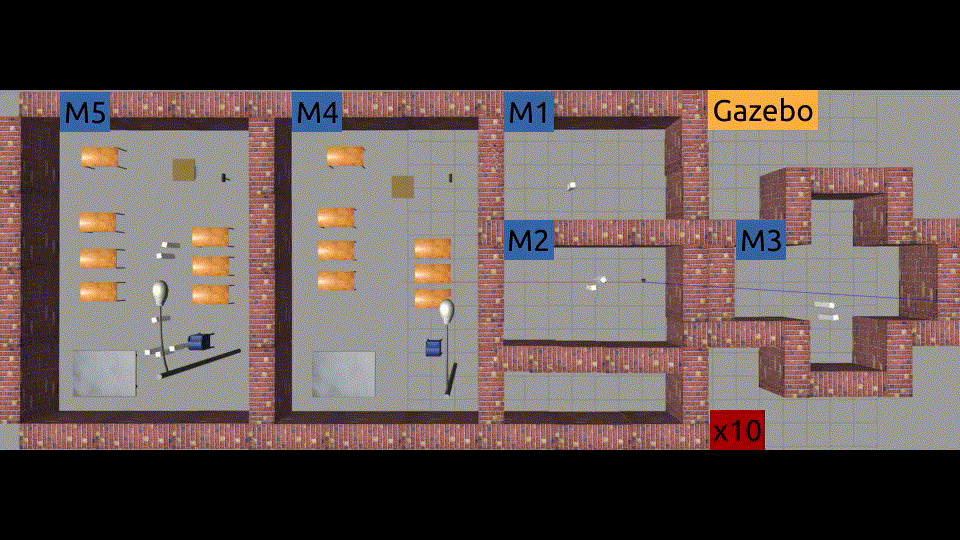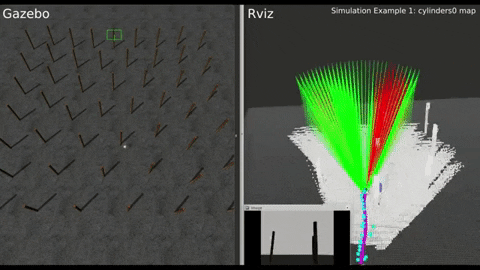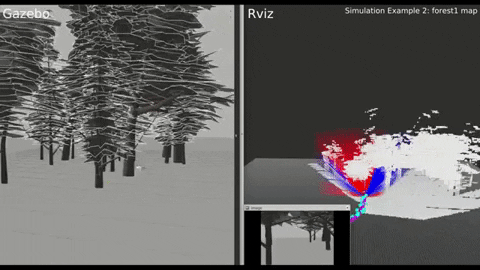Tentabot-DRL: Deep Reinforcement Learning based Robot Navigation in Dynamic Environments using Occupancy Values of Motion Primitives
Tentabot-Heuristic: Reactive Navigation Framework for Mobile Robots by Heuristically Evaluated Pre-sampled Trajectories (Tentacles)
@inproceedings{akmandor2022deep,
title={Deep reinforcement learning based robot navigation in dynamic environments using occupancy values of motion primitives},
author={Akmandor, Ne{\c{s}}et {\"U}nver and Li, Hongyu and Lvov, Gary and Dusel, Eric and Padir, Ta{\c{s}}kin},
booktitle={2022 IEEE/RSJ International Conference on Intelligent Robots and Systems (IROS)},
pages={11687--11694},
year={2022},
organization={IEEE}
}
@article{akmandor2021reactive,
title={Reactive navigation framework for mobile robots by heuristically evaluated pre-sampled trajectories},
author={Akmandor, Ne{\c{s}}et {\"U}nver and Padir, Ta{\c{s}}kin},
journal={International Journal of Robotic Computing},
volume={3},
number={1},
pages={47--68},
year={2021}
}
@inproceedings{akmandor20203d,
title={A 3d reactive navigation algorithm for mobile robots by using tentacle-based sampling},
author={Akmandor, Ne{\c{s}}et {\"U}nver and Padir, Ta{\c{s}}kin},
booktitle={2020 Fourth IEEE International Conference on Robotic Computing (IRC)},
pages={9--16},
year={2020},
organization={IEEE}
}
- Akmandor, N. Ü., Li, H., Lvov, G., Dusel, E., & Padir, T. (2022, October). Deep reinforcement learning based robot navigation in dynamic environments using occupancy values of motion primitives. In 2022 IEEE/RSJ International Conference on Intelligent Robots and Systems (IROS) (pp. 11687-11694). IEEE. [DOI:10.1109/IROS47612.2022.9982133], [arXiv:2208.08034].
- Akmandor, N. Ü. and Padır, T. (2021). Reactive navigation framework for mobile robots by heuristically evaluated pre-sampled trajectories. International Journal of Robotic Computing, 3(1), 47-68. [DOI:10.35708/RC1870-126265], [arXiv:10.35708/RC1870-126265]
- Akmandor, N. Ü., & Padir, T. (2020, November). A 3d reactive navigation algorithm for mobile robots by using tentacle-based sampling. In 2020 Fourth IEEE International Conference on Robotic Computing (IRC) (pp. 9-16). IEEE. [DOI:10.1109/IRC.2020.00009], [arXiv:2001.09199].
- Von Hundelshausen, F., Himmelsbach, M., Hecker, F., Mueller, A., & Wuensche, H. J. (2008). Driving with tentacles: Integral structures for sensing and motion. Journal of Field Robotics, 25(9), 640-673. [DOI:10.1002/rob.20256].
The system has been tested with 20.04 (ROS Noetic).
Follow the tutorials to
- install ROS based on the Ubuntu version.
- set up catkin workspace.
To install tentabot, either follow the manual installation instructions, or attempt an automated install with the following instructions (experimental):
3.1 Clone the tentabot repository into the src folder of your catkin workspace, and change into the tentabot directory.
git clone git@github.com:RIVeR-Lab/tentabot.git
cd tentabot
chmod +x install_tentabot.sh
./install_tentabot.sh
source devel/setup.bash
Tentabot features out of the box simulation support for certain robots. You can view the status of this support here:
| Robot / Model | Manufacturer | Simulation | Real | Methods |
|---|---|---|---|---|
| Turtlebot 3 / Burger | Robotis | ✔️ | ❌ | heuristic/drl |
| Firefly | AscTec | ✔️ | ❌ | heuristic/drl |
| ROSbot | Husarion | ✔️ | ❌ | heuristic/drl |
| Stretch | Hello Robot | ✔️ | ✔️ | heuristic/drl |
| Jackal | Clearpath Robotics | ✔️ | ✔️ | heuristic |
| Turtlebot 2 | Turtlebot | ❌ | ✔️ | heuristic/drl |
Tentabot navigation framework is formed by several submodules such as:
- Subscribes to sensor messages (supports PointCloud2 and LaserScan).
- Publishes an occupancy map in octomap_msgs format.
- task_nav: World, goal and robot specific parameters. Example: Turtlebot3
- map_utility: User defined local map features and sensor specific parameters. Example: Turtlebot3.
- tentabot_server: User defined Tentabot algorithm parameters. Example: Turtlebot3.
4.1.1 To enable Tentabot DRL, set "drl_service_flag: true" in the Tentabot Server configuration file.
4.1.2 Set the "mode" parameter in the Tentabot Server configuration file as either "training" or "testing".
4.1.3 To continue "training" or start "testing", set the "initial_training_path" parameter in the Tentabot Server configuration file by providing the location of a trained model.
4.2 Open the tentabot_framework.launch file.
| Argument | Description |
|---|---|
| sim_flag | If True, it launches Gazebo simulation. |
| rviz_flag | If True, it launches Rviz for data visualization. |
| map_utility_flag | If True, it runs the Map Utility Server. |
| tentabot_server_flag | If True, it launches the Tentabot Server. |
| Argument | Examples | File Location |
|---|---|---|
| config_task_name | config_task_nav_cylinders0_firefly, config_task_nav_forestX_firefly, config_task_nav_turtlebot3, config_task_nav_stretch, config_task_nav_jackal, config_task_nav_jackal_real, config_task_nav_rosbot | task_nav |
| config_map_utility | config_map_utility_cylinders0_firefly, config_map_utility_forestX_firefly, config_map_utility_turtlebot3, config_map_utility_stretch, config_map_utility_jackal, config_map_utility_jackal_real, config_map_utility_rosbot | map_utility |
| config_tentabot_server | config_tentabot_server_firefly, config_tentabot_server_turtlebot3, config_tentabot_server_stretch, config_tentabot_server_jackal, config_tentabot_server_jackal_real, config_tentabot_server_rosbot | tentabot_server |
roslaunch tentabot tentabot_framework.launch
We tested our framework in real robot platforms including Turtlebot2, Stretch and Jackal.
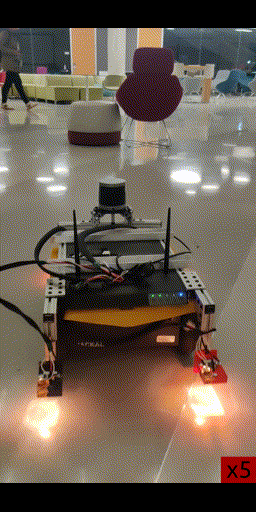
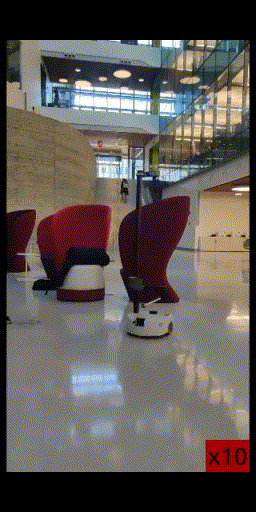
5.1 Run the robot bring-up (Example: Jackal) which includes:
- publishing robot's links and joint state info
- launching sensor drivers.
5.2 Run a localization estimation algorithm (Example: ROS Gmapping).
5.3 Follow all steps in the previous section noting that in step 4.2.1, set the "sim_flag" argument as False in tentabot_framework.launch file.
Neset Unver Akmandor | akmandor.n@northeastern.edu
Eric Dusel | dusel.e@northeastern.edu
Gary Lvov | lvov.g@northeastern.edu | www.garylvov.com
Hongyu Li | li.hongyu1@northeastern.edu
Tentabot was developed at the RIVeR Lab, Northeastern University.
